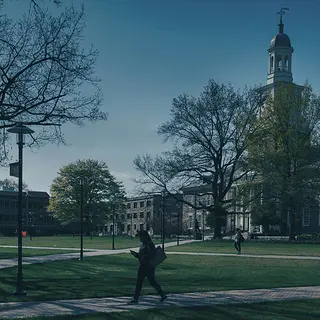
HBCU Cultural Heritage Stewardship Initiative
Through the African American Cultural Heritage Action Fund, the National Trust for Historic Preservation, National Endowment for the Humanities, Andrew W. Mellon Foundation, Ford Foundation, the JPB Foundation, J.M. Kaplan Fund, Executive Leadership Council, Chipstone Foundation, Wunsch Americana Foundation, and James Marston Fitch Charitable Foundation have partnered and invested over $2 million to create an HBCU Cultural Heritage Stewardship Initiative.
In partnership with Historically Black Colleges and Universities (HBCUs), this program provides technical assistance and funds new Cultural Heritage Stewardship Plans. The partnership seeks to empower HBCUs with the resources to protect, preserve and leverage their historic campuses, buildings, and landscapes, ensuring these academic institutions and symbols of African American pride are preserved to inspire and educate future generations.
The Legacy of HBCUs
From Tuskegee University to Spelman College, Shaw University to Florida A&M, our nation’s 105 HBCUs are living testaments to African American history and the ongoing achievements of generations of highly influential scholars, artists, attorneys, scientists, and activists.
The historic buildings and landscapes on HBCU campuses—many of which were built and designed by African American architects, planners, and students—hold a diverse and empowering collection of stories and artifacts that help tell the full American story and reflect the important legacy of the Black educational experience and communities that surround and support these institutions.

photo by: Jennifer Hughes
Founders Library at Howard University.
Stewardship Plans
Yet despite the pivotal role HBCUs play in the cultural landscape of our country, their preservation is often overlooked and vastly underfunded, leading to deferred maintenance, vacancy, and the threat of demolition. To counter these trends, the National Trust for Historic Preservation has funded up to six single-structure and two campus-wide preservation plans during the pilot phase of the program. In addition, the National Trust will:
- Grow existing and establish new relationships with HBCU executive leadership, including Board of Trustees, Presidents, and Directors of Campus Facilities.
- Provide direct grants to HBCUs to hire qualified consultants to prepare the stewardship plan.
- Provide targeted preservation expertise and support to HBCUs and establish replicable stewardship models.
- Promote HBCU history and culture and increase visibility of HBCUs as African American historic sites.
- Convene HBCU program participants to discuss the implementation of the completed stewardship plans and the opportunities and challenges potentially impacting HBCU cultural heritage stewardship.
- Encourage HBCUs to engage design and preservation students, African American architects, and professionals to support a more diverse and equitable field of practice.
Since listing HBCUs as one of America’s 11 Most Endangered Historic Places in 1998, the National Trust has advocated and worked to strengthen the stewardship capacity of HBCUs, while also raising national awareness of their significance and the ongoing threats of demolition, deferred maintenance, and insufficient funding. The National Trust and its partners aim to grow the leadership and preservation capacity of HBCUs that steward some of the most diverse and exceptional collective of historic assets in the world.

photo by: Molly Baker
HOPE Crew window restoration workshop at Tuskegee University.
Advisory Committee
This HBCU Cultural Heritage Stewardship Initiative is an opportunity to directly assist HBCUs with developing solutions to preserve their historic buildings and campuses. To inform and advise the National Trust, an esteemed community of national leaders in campus planning, architecture, preservation practice, and landscape design have joined the HBCU Cultural Heritage Stewardship Initiative Advisory Committee, including:
- Arthur J. Clement, Preservation Architect
- Nakita Reed, Associate, Quinn Evans
- Jack Pyburn, Principal, Lorde Aeck Sargent
- Robert Z. Melnick, FASLA, Director, Cultural Landscape Research Group, Professor Emeritus, University of Oregon
- Kim McCalla, Morgan State University, Head of Facilities
- Derrek Niec-Williams, Howard University, Executive Director, Campus Planning, Architecture & Development
- Brian E. Hogg, Senior Historic Preservation Planner, University of Virginia
- Michael Marshall, Principal, Michael Marshall Design, Washington D.C.
- Adam D. Thies, Associate Vice President, Capital Planning, Indiana University
- Thaisa Way, FASLA, FAAR, Professor, University of Washington
Historically Black Colleges and Universities Stories
-
Preservation Magazine Howard University Rehabs the Home of Civil Rights Activist Mary Church Terrell -
HBCU Cultural Heritage Stewardship Initiative The Legacy of Homecoming: 5 Preservationists on the HBCUs They Call Home -
African American Cultural Heritage Action Fund $3.8M in Action Fund Grants Help Protect 40 African American Historic Sites


